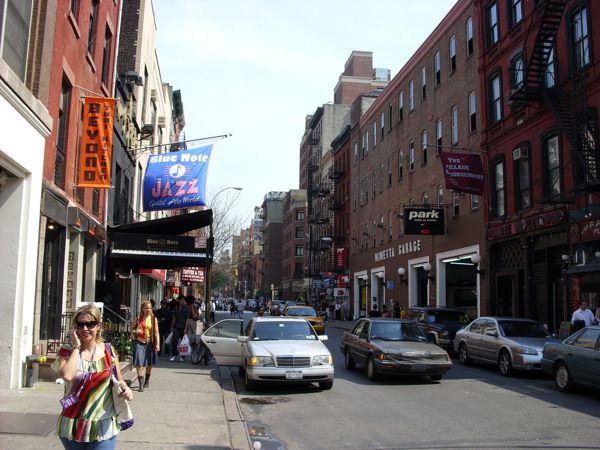Back in March, I listed the books that influenced me and commented that Jane Jacobs was the only one to have a significant impact on my everyday life. Jacobs was a profoundly important bottom-up thinker, and so I’m going to do a few posts about the ideas in her famous book The Death and Life of Great American Cities.
Jacobs doesn’t quite put it this way, but Great American Cities is really a treatise on the importance of network effects to urban wealth creation. The reason people flock to noisy, dirty, crowded cities like New York and Chicago is because most of the things we value are provided by other human beings, and being in a large city puts us in close proximity with many more of them. Other people help us in all kinds of ways: employing us, selling us things, hanging out with us, falling in love with us, and so forth. Human beings are constantly engaging in social “experiments”: trying out new bars or restaurants, going on blind dates, throwing parties, changing jobs, starting businesses, and so forth. A high-density urban environment produces both more experiments (new restaurant openings, say) and more people around who can benefit from the successful ones (by patronizing said restaurants).
 The experiments cities foster depend on serendipity, which means that they work best when organized in bottom-up fashion. Jacobs was no libertarian, but she had nothing but scorn for efforts to re-make cities from the top down. For example, she was a vocal critic of the public housing projects that were in their heyday in 1961. The key problem, she said, was that project designers thought they could predict in advance which amenities their residents would use. As a consequence their designs tended to be literal walled gardens. They were regimented and brittle, with few provisions for the projects to grow and adapt to the actual needs of their residents.
The experiments cities foster depend on serendipity, which means that they work best when organized in bottom-up fashion. Jacobs was no libertarian, but she had nothing but scorn for efforts to re-make cities from the top down. For example, she was a vocal critic of the public housing projects that were in their heyday in 1961. The key problem, she said, was that project designers thought they could predict in advance which amenities their residents would use. As a consequence their designs tended to be literal walled gardens. They were regimented and brittle, with few provisions for the projects to grow and adapt to the actual needs of their residents.
Rather than trying to predict peoples’ specific needs, Jacobs’s approach was to pay close attention to how actual city-dwellers were already living. She favored incremental reforms designed to improve urban landscapes without destroying the value that was already there.
Jacobs’s advice for urban planners was relentlessly practical. At the heart of Great American Cities were four seemingly simple prescriptions for successful urban neighborhoods: mixed uses, short blocks, aged buildings, and high density. As we’ll see, what these prescriptions have in common is that they all facilitate the bottom-up process of social experimentation that make cities engines of wealth creation.




Very cool. Is The Life and Death of Great American Cities accessible to those of us who’ve never taken a particular interest in urban planning? Sounds like something that might be worth a trip down to the book store.
It’s very accessible.
If you haven’t already, check out Scott’s ‘Seeing Like a State’ – it provides a really fantastic theoretical lens on issues like city-planning where the state attempts to “make legible” its population so that it can pursue the high-modernist projects that Jacobs was confronting.
Kevin,
I’ve been meaning to read that. Your comment got me to finally order it from Amazon. Thanks!